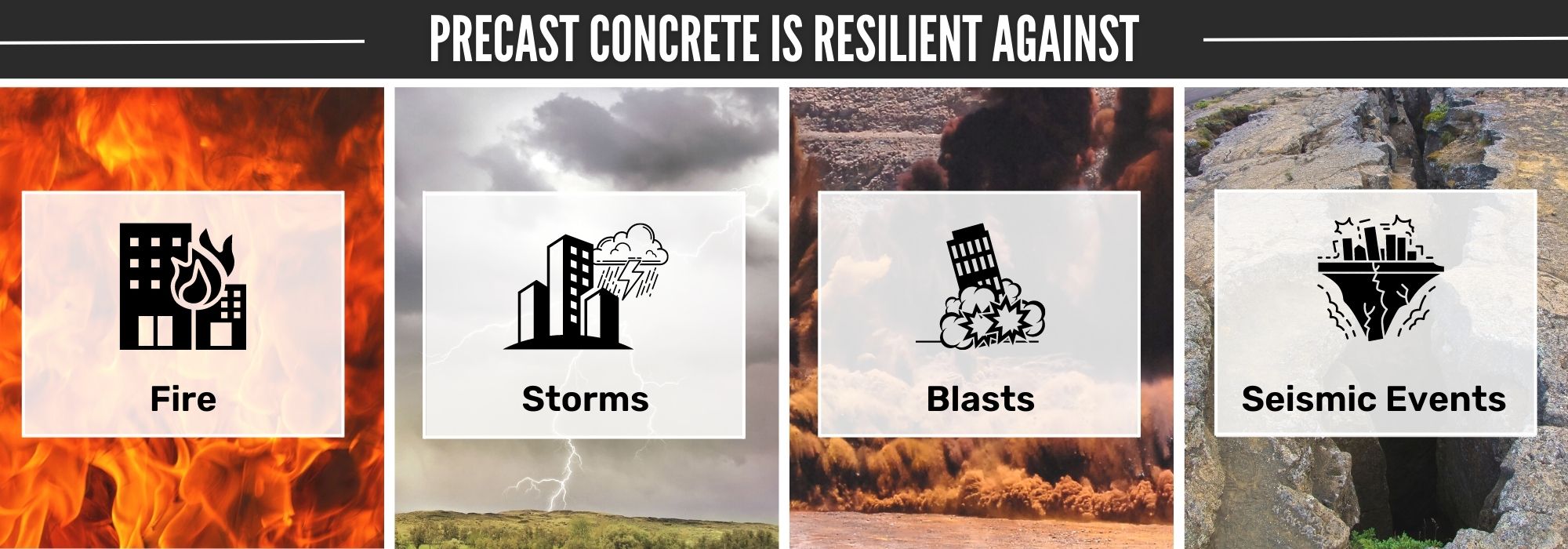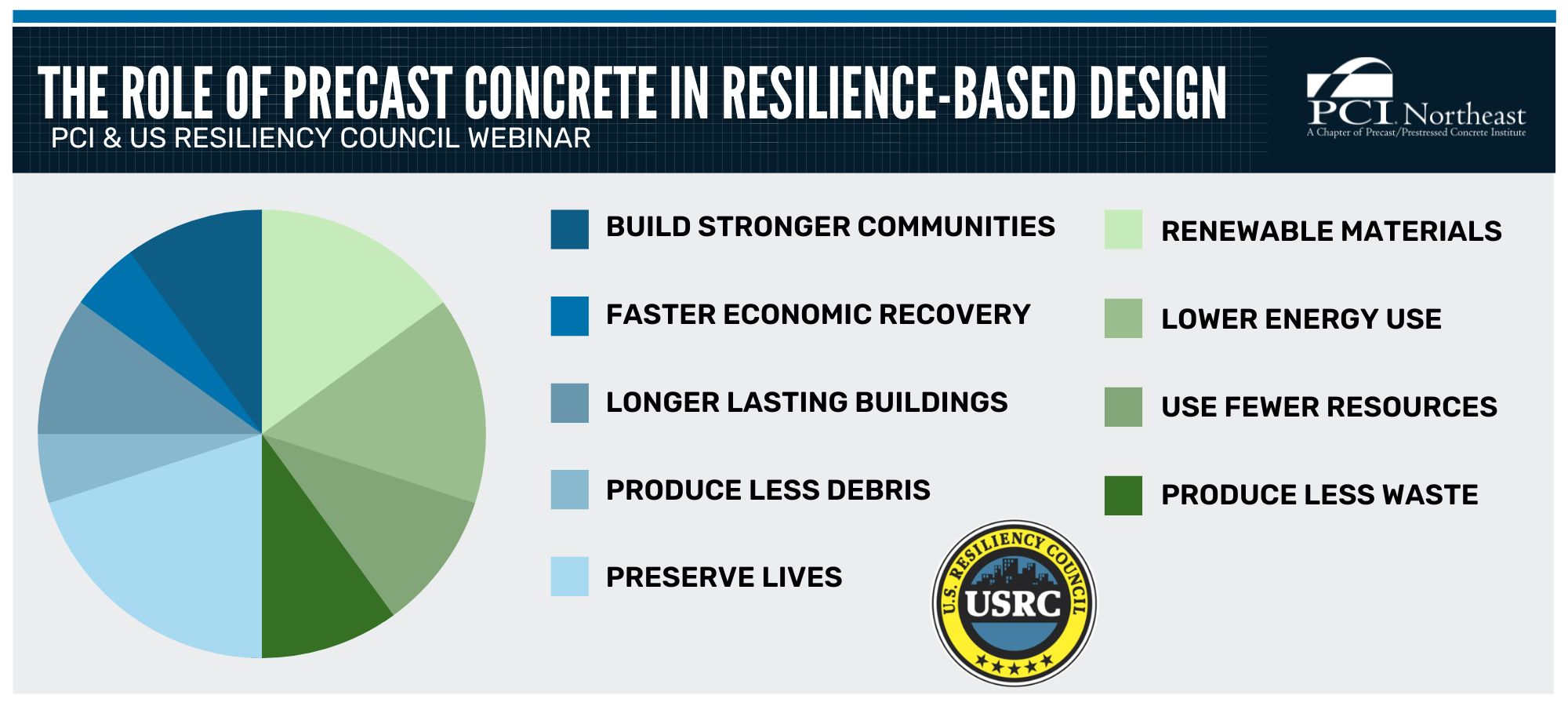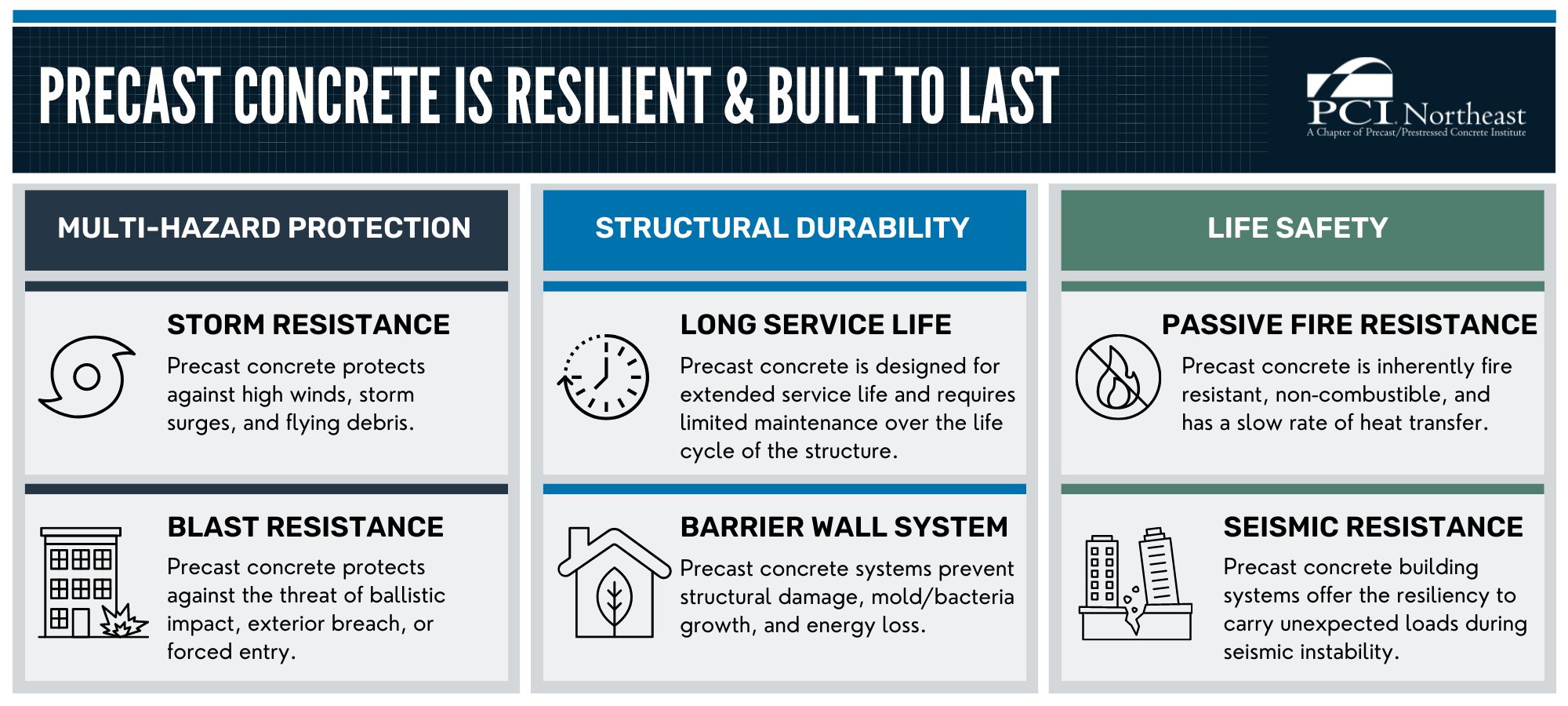06/12/2023

Resilient design anticipates disruption and an unpredictable future in the built environment. Designing resilient structures should recognize ongoing climate changes with elevated temperatures, extreme weather events, rising sea levels, floods, drought, and wildfires. Resilient design is also required for non-climate-related events such as earthquakes, solar flares, and human-induced actions like terrorism.
A recent article by the
Resilient Design Institute highlights the inherent relationship between resilience and sustainability, explaining that "
Sustainability is about enduring function and cannot be achieved without resilience. The opposite is not true. A resilient component, measure, or system may not be sustainable by cost, limitation of resources, or environmental impact.
The U.S. Resiliency Council (USRC) is committed to increasing public awareness of the performance of buildings during natural disasters and communicating the value of resilience-based design in protecting not only the lives of Americans but also their livelihoods. Gain a clear understanding of particular resilient properties of precast concrete systems with
The Role of Precast Concrete in Resilience-Based Design webinar. Case studies are highlighted where precast concrete systems have achieved resilience ratings through the USRC Building Rating System.
.jpg)

The social and economic effects of natural disasters are crucial for determining the sustainability of a society, business, or family. Not only must we have a minimal impact on the environment, but the environment must also have a minimal impact on us. American architect and sustainability expert Carl Elefante said: "The greenest (most sustainable) building is the one that is already built." We bring this up to demonstrate the interdependent relationship between sustainability and resiliency. Resilient structures still standing after a storm, fire, or catastrophic event can be immediately put into service or, through adaptive reuse, altered to suit the ecosystem's needs, resulting in economic sustainability.
.jpg)
Explore this
article in Ascent Magazine to view unique precast concrete projects that demonstrate resiliency
Resiliency should be designed for today and built to withstand tomorrow.
Resiliency matters and should be as critical in structural design considerations as in reducing our carbon footprint. Consider the trade-off between building a resilient structure, one that withstands catastrophic weather events, fire, acts of terrorism, or seismic events one time, versus building that same structure multiple times because material selection supporting resilient design wasn't initially used. Choosing durable building materials that support resilient design is the most sustainable, climate-friendly approach.
 Precast Concrete is Resilient, Durable, & Sustainable
Precast Concrete is Resilient, Durable, & Sustainable
Resilience in the built environment is enhanced by design strategies that improve durability. Durability encompasses building materials and methods, as well as building design, infrastructure, and ecosystems.
In addition to their aesthetic value, precast concrete structures can withstand harsh weather conditions, including hurricanes, tornadoes, and snowstorms. Precast concrete is a preferred building material to withstand wildfires and earthquakes in the Western United States. All structures are subject to daily wear and tear, and many others house thousands of people at any given time, these systems must withstand years of constant use.
The safety of the structures where people live, and work is relevant to building owners, tenants, lenders, insurers, and governments. They can relate to preserving a community's economic and social makeup, which can only be accomplished if structures can be quickly repaired and returned to functionality following a disaster.
Durability, strength, and continuity are attributes of precast concrete structures intended to endure the test of time.
Use the following resources to further your education in precast concrete resilient design:
Explore Resilient Design with Precast Concrete
Take an online course at the PCI eLearning Center
Resilient Case Studies